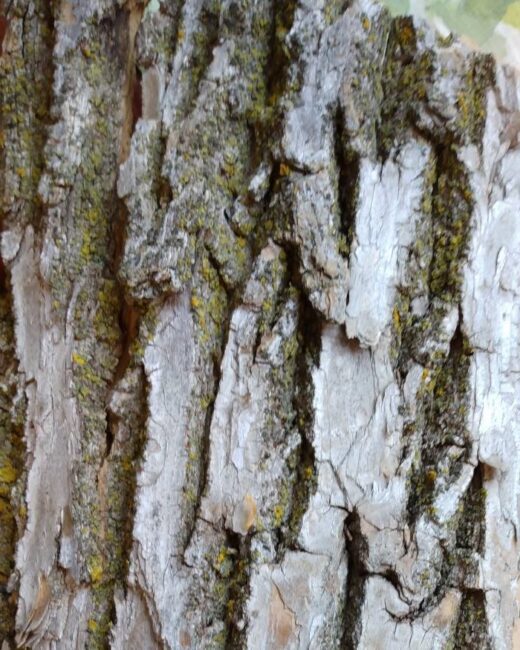
Woodpecker flecking on ash bark
Photo credit Lisa Johnson

Woodpecker Flecking on Ash
Photo credit Wisconsin DNR
Even before humans are able to detect signs of emerald ash borer in ash trees, woodpeckers know the larvae are there, feeding just under the tree’s bark. Woodpecker damage, called “flecking,” occurs when birds peck away the top layer of a tree’s bark to get at the larvae beneath. This is usually a sign that an ash tree is infested with emerald ash borer (EAB), an invasive insect that kills more than 99% of untreated ash trees.
EAB is now known to be present in 69 of Wisconsin’s 72 counties. It is especially common in the southern half of the state. If you see flecking on a tree, you should contact a certified arborist to examine the tree. It is vital to detect EAB as soon as possible in order to consider treatment of high-value ash trees. Treatment is more likely to be successful earlier in the tree’s infestation. Low or moderate levels of woodpecker flecking often correspond to lower levels of infestation. Flecking usually starts higher up in the tree’s canopy, so you may need to use binoculars. The lower you see it on the trunk, the more severe the level of infestation is likely to be. The most effective treatments are injected products provided by tree care companies. If you want an injected product, you can search for a certified arborist to administer the treatment on the Wisconsin Arborist Association website. It is a good idea to schedule treatments well in advance, so winter is a good time to do this. Insecticide treatments are significantly more effective on EAB-infested ash with less than 50% canopy thinning and ideally less than 20%. Insecticide treatments are not recommended for trees with more than 50% canopy thinning; they will likely die regardless. Visit the Wisconsin EAB site and EAB Information Network websites for more information on insecticides labeled for EAB treatment.
Ash do need to be treated in perpetuity for emerald ash borer, so it is important to consider carefully whether you are prepared to do that. A fact sheet from the UW Horticulture Team titled ‘Is My Ash Tree Worth Treating for Emerald Ash Borer?’ gives some guidelines to think about. You can also find it at the Wisconsin Horticulture site; type ‘XHT1215’ into the search box or search under the ‘Insects’ dropdown. Some ash trees may not be worth treating due to pre-existing health or structural issues. For those trees, removal and replacement may be a better option. A list of trees of comparable size that would be suitable replacements called ‘Alternatives to Ash Trees’ can be found at the UW-Madison EAB site https://eab.russell.wisc.edu/ .




